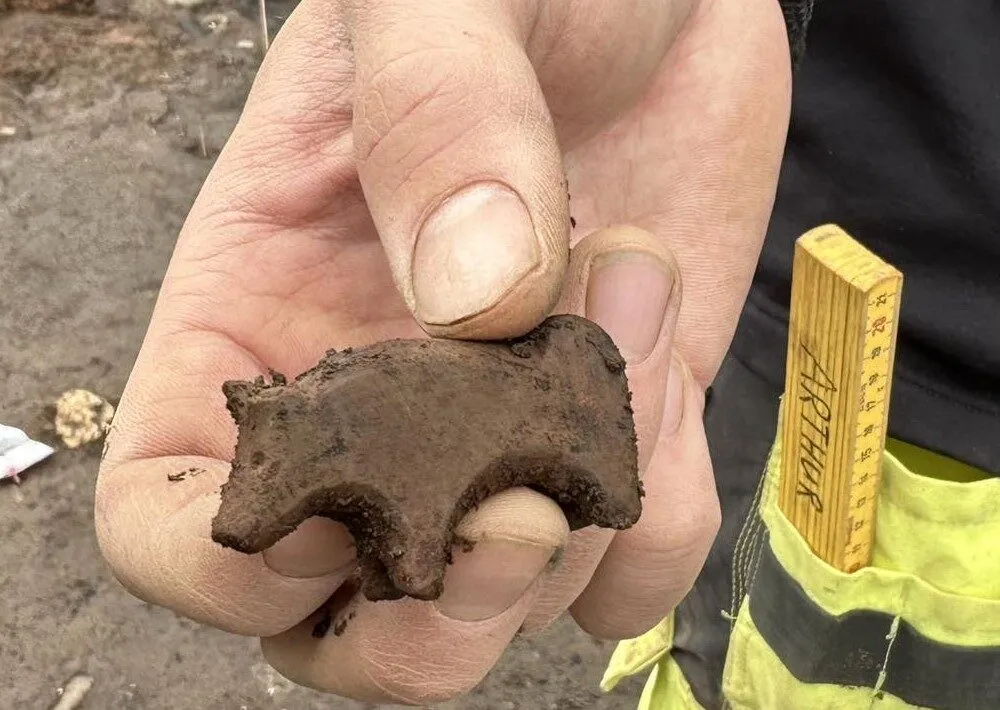Archaeologists in Iceland Can’t Agree Which Animal This Mysterious Viking-Era Toy Depicts
The tenth-century stone figurine, alternatively identified as a pig, a bear or a dog, sheds light on the lives of long-ago Norse children

Researchers in Iceland have unearthed a rare remnant of the Viking Age—a tiny stone figurine they believe was once a child’s toy. There’s just one problem: The archaeologists can’t decide whether it’s a bear, a pig, a dog or a different beast altogether.
The small carving dates to between 940 and 1000 C.E. Experts discovered it at the Fjordur farm site in Seydisfjordur, which has produced many archaeological treasures since excavations began there in 2020, reports Iceland Review’s Erik Pomrenke.
According to a statement from the Norwegian Institute for Cultural Heritage Research (NIKU), the mystery animal measures 5 centimeters long and 2.7 centimeters tall. It is made from yellow-brown palagonite tuff, a type of volcanic rock. Despite a slight chip on one of its ears, it remains in good shape and stands upright on all fours.
Toys like this one offer valuable insights into the lives of Icelandic children of the past.
“Children are not so visible in the Viking Age, so this is an amazing find,” excavation manager Ragnheidur Traustadóttir tells Live Science’s Margherita Bassi.
The scientists shared their discovery on Facebook in mid-August. Commenters have not been shy about offering their own opinions, with some questioning if the animal might even be a horse.
While many members of the team believe the figurine resembles a pig, others think it depicts a bear. Both animals have a lengthy local history: During the Viking era, Norse people raised pigs as livestock. Between these settlers’ arrival on Iceland in the late ninth century and the present, around 600 polar bears have been sighted on the island. The figurine could also represent an ancestor of the Icelandic sheepdog, a type of Nordic Spitz dog.
Still, Traustadóttir tells Austurfrétt’s Gunnar Gunnarsson, per a translation by Iceland Review, “When you hold the object, it doesn’t seem like a dog.”

Excavations at Seydisfjordur were only supposed to run for two years. But the dig has been so fruitful that it’s now in its fifth season. Thus far, researchers have uncovered a longhouse, animal enclosures, spinning wheels for weaving, beads, lamps, pots, coins and more.
“There’s no other site in Iceland that has so many finds,” Traustadóttir says to Live Science. The team has banked up to 4,000 reported artifacts, among them an old board game made from the same stone as the animal carving.
“This winter, we will examine the finds, including the animal, to see if we can identify it, although it may remain open for discussion,” Traustadóttir tells Fox News’ Ashlyn Messier.

